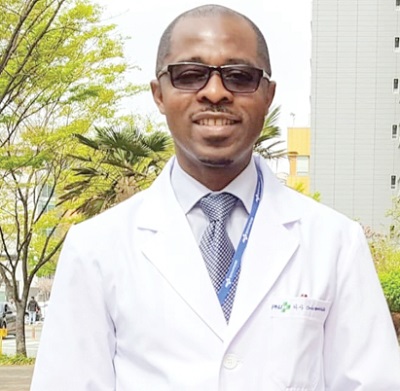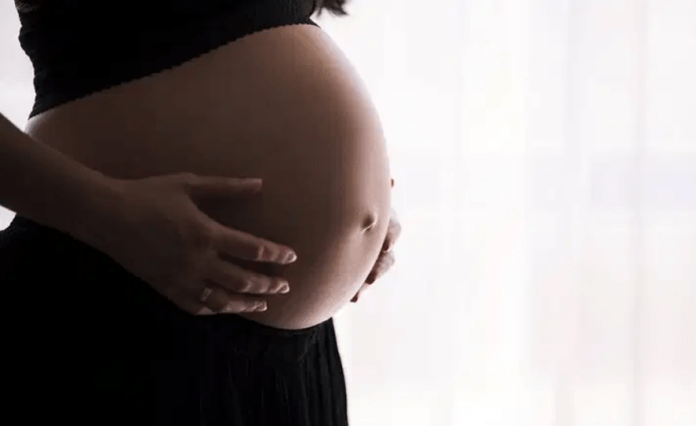Hypertensive disorder in pregnancy has ravaged homes and hopes, ruining lives as a silent killer that many victims are yet to identify.
As one such victim, Koiwah Koi-Larbi, narrates, “I am a four-time survivor of preeclampsia with only one surviving child, my second child, and still waiting for the Ghana Health Service to support me to have another child because I love babies.”
“I was fortunate to be delivered of my surviving child in the United States of America (USA), where care happens to be more advanced, although it was not easy there as well,” she narrated.
The condition, known as preeclampsia, has been identified as the leading cause of maternal mortality in the country, taking over from bleeding (haemorrhage), currently second on the list.
It is a condition that causes a sudden rise in blood pressure and excess protein in the urine during pregnancy, and can sometimes present as headaches, palpitations and swollen feet.
The Ghana Health Service’s data on maternal mortalities recorded in health facilities show that in 2022, 102 mothers were lost out of every 100,000 live births, with majority of the deaths caused by preeclampsia.
In relation to maternal mortalities recorded both within and out of health facilities, the United Nation’s Inter-Agency Support Group estimated that the country lost 308 expectant mothers out of every 100,000 live births based on its recent survey in 2020.
Out of the various mortality rates, it is estimated that about 21 per cent is attributed to preeclampsia.
Survivor’s story
Koiwah said early into her first pregnancy in 2012, she had all the symptoms of preeclampsia, including headaches and swollen feet, but she never knew what it was at the time.
She said although she was regular at antenatal clinics, she was not told anything about what was happening to her.
“Around 27 weeks, I had a serious headache, but my husband thought I just needed rest so I went to sleep. Around 2 a.m., all I could hear was people calling me Koiwah, Koiwah repeatedly.
“I was told I had been fitting, and had been rushed to a private health facility nearby, but they did not accept me because they did not want a mortality case recorded there due to the severity of my condition. They referred me to a public facility after stabilising me.”
“Luckily, there was a night surgeon at the public facility who did an emergency caesarian session because my blood pressure was extremely high.”

“My baby came out, and I gained consciousness after 24 hours, asking about my baby, and was told he had been sent to the neonatal intensive care unit (NICU). I saw him, he was very tiny, less than a kilogramme. Eventually, we lost the baby,” Koiwah said.
When she got pregnant six months later, being so anxious about the survival of the baby, she sought care in the United States of America (USA).
According to Ms Koi-Larbi, she attended five months of antenatal in the country before she left, and 30 weeks into the pregnancy, signs of preeclampsia set in again.
“I was admitted twice to the emergency ward under strict monitoring. At 37 weeks, I was told I had to be delivered of the baby girl, my only surviving child of the four pregnancies and she is almost 10 years now,” she said.
Thereafter, Ms Koi-Larbi said she had babies again in 2017 and 2019 but the condition had made it challenging for them to survive.
Awareness
Due to the high prevalence rate globally, May 22 has been designated World Preeclampsia Day to raise awareness of the hypertensive disorder identified as the leading cause of maternal deaths locally and globally.
The awareness is expected to lead to improved care for patients for better pregnancy outcomes.
This annual event counts as a global call to various local and government healthcare authorities and policymakers to promote action required to combat preeclampsia.
Early detection
Health experts such as an obstetrician gynaecologist and Head of the Safe Motherhood Programme of the Ghana Health Service, Dr Chris Fofie, said although it was a very complex and worrying health condition, early diagnosis would enhance management outcomes for patients to prevent the worst of outcomes and complications.
He said it was never a death sentence, if precautions were taken in time.
Dr Fofie said the condition was complex because preeclampsia often presented no symptoms until a seizure occurred, which sometimes became fatal.
“The exact causes of preeclampsia and eclampsia are not fully understood, but some factors that may increase a person’s vulnerability include a family history of preeclampsia, personal history of preeclampsia, chronic hypertension, obesity and diabetes,” he said.
Although knowledge of the causes and prevention is low and evolving, health experts and the World Health Organisation (WHO) says early diagnosis of the disorder could facilitate quality and timely care to save many lives.
Dr Fofie said for expectant mothers, antenatal clinic was the gateway to all required interventions, and called on women to begin their clinics as soon as they got to know about their pregnancy status to avert complications arising from preeclampsia and other conditions.
The obstetrician gynaecologist said preeclampsia, which was a form of threat to both mother and child, was usually diagnosed through regular prenatal check-ups, which involved monitoring blood pressure and urine protein levels.
He also advised those who had challenges, including preeclampsia in previous pregnancies, and those planning to get pregnant to seek preconception clinic services to prepare them better for better outcomes of their anticipated pregnancies.
“Pre-conception clinics can help pick up potential challenges through examinations for better pregnancy outcomes. If some medications and processes are required before conception, all that would be done to enhance the journey through pregnancy and safe delivery,” Dr Fofie said.
“The primary treatment for preeclampsia and eclampsia is delivery of the baby, as this resolves the condition. However, if the pregnancy is less than 37 weeks and the condition is mild, doctors may recommend close monitoring and interventions to manage blood pressure and prevent complications,” the obstetrician gynaecologist said.
Interventions
Dr Fofie said based on the severity of the situation and the gestation period, some medications could be given to control blood pressure and other associated conditions when preeclampsia was diagnosed.
However, he said, in most cases, until the pregnant person’s blood pressure reduced, she was at a greater risk of stroke, severe bleeding, separation of the placenta from the uterus and seizures.
“Eclampsia can also set in, a severe form of preeclampsia that is characterised by the development of seizures or convulsions. These seizures can occur during pregnancy or in the postpartum period. Eclampsia is a life-threatening condition that requires immediate medical attention,” Dr Fofie said.
“In some cases, especially if preeclampsia developed earlier in pregnancy, early delivery may not be the best option for the baby.”
“The health condition is a common factor in preterm delivery and accounts for about 20 per cent of all neonatal intensive care admissions.”
Another survivor, Mary, said she had the condition and never noticed.
“I was walking down the aisles in the hospital, heavily pregnant, but did not even notice my feet were badly swollen. A doctor, who was passing by, just said to me: ‘Madam, you don’t look okay’, although I insisted I was.”
She said the doctor forced her to follow him to the maternal unit where her BP was taken, and it read 200/100 something.
“The doctor told me I was having preeclampsia, but I did not understand him at the time. He quickly made some calls and although I was around 30 weeks, I was delivered of the baby. She was put in an incubator and she survived,” Mary recounted.
Adwoa Pinamang Boateng Desu was also diagnosed with severe pregnancy induced hypertension (PIH) in 2017 during her fourth and last pregnancy.
The public health officer narrated how her routine visit in her third trimester led to the discovery of the PIH.
“After my BP was checked, the nurse asked me to sit for a while before another check. She was reluctant to tell me why I needed to rest, and I was not actually bothered because I felt well and thought I was okay.”
“I was later told I had very high BP, an indication of preeclampsia. I was put on anti-hypertensive drugs in addition to my routine medication, and was closely monitored until delivery,” she said.
She went through a caesarian surgery due to a failed induction.
Mrs Desu advised pregnant women to always attend antenatal visits on schedule because PIH could present itself with no signs and symptoms.
The Chairman of the Faculty of Obstetrics and Gynaecology of the Ghana College of Physicians and Surgeons, Professor Alexander Tawiah Odoi, said hypertensive disorders had overtaken haemorrhage as the leading cause of maternal deaths in the country and in most parts of the world.
He said preeclampsia was a complex condition that was difficult to predict and prevent, and even more difficult to manage.

